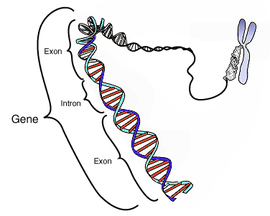Here I'd like to keep a list of genetic terms not in alphabetical order but in an order of my learning.
That is why I called it "Unglossy".
This post will be modified often.
DNA. Along with RNA and proteins, DNA is one of the three major macromolecules essential for all known forms of life. Genetic information is encoded as a sequence of nucleotides (guanine, adenine, thymine, and cytosine) recorded using the letters G, A, T, and C.
Nucleotide. Nucleotides are biological molecules that form the building blocks of nucleic acids (DNA and RNA).
| Symbol | Description | Bases represented | |||
| A | adenosine | A | |||
| C | cytidine | C | |||
| G | guanosine | G | |||
| T | thymidine | T | |||
| U | uridine | U | |||
| W | weak | A | T | ||
| S | strong | C | G | ||
| M | amino | A | C | ||
| K | keto | G | T | ||
| R | purine | A | G | ||
| Y | pyrimidine | C | T | ||
| B | not A | C | G | T | |
| D | not C | A | G | T | |
| H | not G | A | C | T | |
| V | not T | A | C | G | |
| N or - | any base (not a gap) | A | C | G | T |
Chromosome. A chromosome is an organized structure of DNA and protein found in cells.
| Diagram of a replicated and condensedmetaphase eukaryotic chromosome. (1)Chromatid – one of the two identical parts of the chromosome after S phase. (2) Centromere – the point where the two chromatids touch, and where the microtubules attach. (3) Short arm. (4) Long arm. |
FASTA format. Text-based format for representing either nucleotide sequences or peptide sequences, in which nucleotides or amino acids are represented using single-letter codes.
>gi|5524211|gb|AAD44166.1| cytochrome b [Elephas maximus maximus] LCLYTHIGRNIYYGSYLYSETWNTGIMLLLITMATAFMGYVLPWGQMSFWGATVITNLFSAIPYIGTNLV EWIWGGFSVDKATLNRFFAFHFILPFTMVALAGVHLTFLHETGSNNPLGLTSDSDKIPFHPYYTIKDFLG LLILILLLLLLALLSPDMLGDPDNHMPADPLNTPLHIKPEWYFLFAYAILRSVPNKLGGVLALFLSIVIL GLMPFLHTSKHRSMMLRPLSQALFWTLTMDLLTLTWIGSQPVEYPYTIIGQMASILYFSIILAFLPIAGX IENY
Sources for genetics databases:
ftp://hgdownload.cse.ucsc.edu/apache/htdocs/goldenPath/currentGenomes/
ftp://ftp.ensembl.org/pub/mnt2/release-70/fasta/
ftp://ftp.ncbi.nlm.nih.gov/genomes/
ftp://ftp.ensembl.org/pub/mnt2/release-70/fasta/
ftp://ftp.ncbi.nlm.nih.gov/genomes/
Gene. Some stretches of DNA and RNA that code for a protein.
 |
| Diagram of the "typical" eukaryotic protein-coding gene. Promoters andenhancers determine what portions of the DNA will be transcribed into theprecursor mRNA (pre-mRNA). The pre-mRNA is then spliced into messenger RNA(mRNA) which is later translated into protein. |
Additional info:
Human
http://www.ornl.gov/sci/techresources/Human_Genome/project/info.shtml
Chromosome 1 has the most genes (2968), and the Y chromosome has the fewest (231).
By the Numbers
- The human genome contains 3164.7 million chemical nucleotide bases (A, C, T, and G).
- The average gene consists of 3000 bases, but sizes vary greatly, with the largest known human gene being dystrophin at 2.4 million bases.
- The total number of genes is estimated at 30,000 —much lower than previous estimates of 80,000 to 140,000 that had been based on extrapolations from gene-rich areas as opposed to a composite of gene-rich and gene-poor areas. Latest estimates: 20000 - 25000 genes.
- Almost all (99.9%) nucleotide bases are exactly the same in all people.
- The functions are unknown for over 50% of discovered genes.
- Less than 2% of the genome codes for proteins.
- Repeated sequences that do not code for proteins ("junk DNA") make up at least 50% of the human genome.

No comments:
Post a Comment